We may not have the course you’re looking for. If you enquire or give us a call on +44 1344 203 999 and speak to our training experts, we may still be able to help with your training requirements.
Training Outcomes Within Your Budget!
We ensure quality, budget-alignment, and timely delivery by our expert instructors.
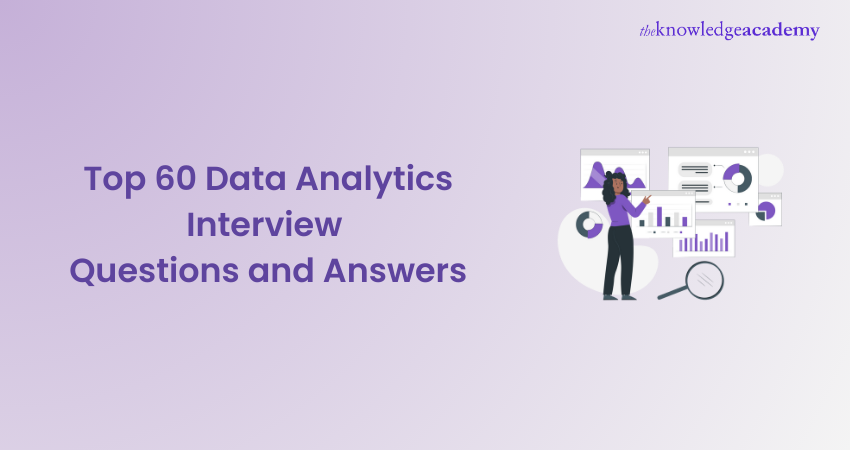
Preparing for a Data Analytics interview and curious about what might come your way? Whether you’re an experienced Analyst or just stepping into the field, thorough preparation is the key to acing your interview. This blog delves into the most commonly asked Data Analytics Interview Questions, spanning technical skills, statistical methods, and behavioural insights.
Prepare for your next data analytics interview with our comprehensive list of top interview questions and secure your dream job in data analytics! Let’s get you ready to conquer that Data Analytics role!
Table of Contents
1) Common Data Analytics Interview Questions
2) Data Analytics Interview Questions on Statistics
3) Excel Data Analytics Interview Questions
4) SQL Interview Questions for Data Analytics
5) Tableau Data Analytics Interview Questions
6) Technical Data Analytics Interview Questions
7) Machine Learning Data Analytics Interview Questions
8) Behavioural Data Analytics Interview Questions
9) Conclusion
Common Data Analytics Interview Questions
Here are the essential questions and answers for common Data Analytics interviews.
1) What is the difference between Descriptive, Predictive, and Prescriptive Analytics?
The interviewer wants to know your understanding of different types of analytics and how they are applied.
Sample Answer: “Descriptive Analytics summarises historical data to understand what has happened in the past. Predictive Analytics uses statistical models and Machine Learning techniques to forecast future outcomes based on historical data. Prescriptive Analytics suggests actions that can be taken to achieve desired outcomes, often using optimisation algorithms.”

2) How do you address missing or incomplete data in your analysis?
The interviewer wants to know your approach to data quality issues.
Sample Answer: “I address missing data by first analysing the extent and pattern of missingness. Common techniques include imputation, where missing values are replaced with the mean, median, or mode, or using algorithms that can handle missing data. In some cases, I may also remove incomplete records if they are not significant.”
3) Why is Data Visualisation important in Data Analysis?
The interviewer wants to understand whether you know the role of visualisation in conveying data insights.
Sample Answer: Data Visualisation is crucial because it allows complex data to be presented in a visual format, making it easier to understand trends, outliers, and patterns. Effective visualisations can help stakeholders quickly grasp insights and make informed decisions.
4) Which programming languages are most commonly used in Data Analytics?
The interviewer wants to know your familiarity with tools and languages commonly used in the industry.
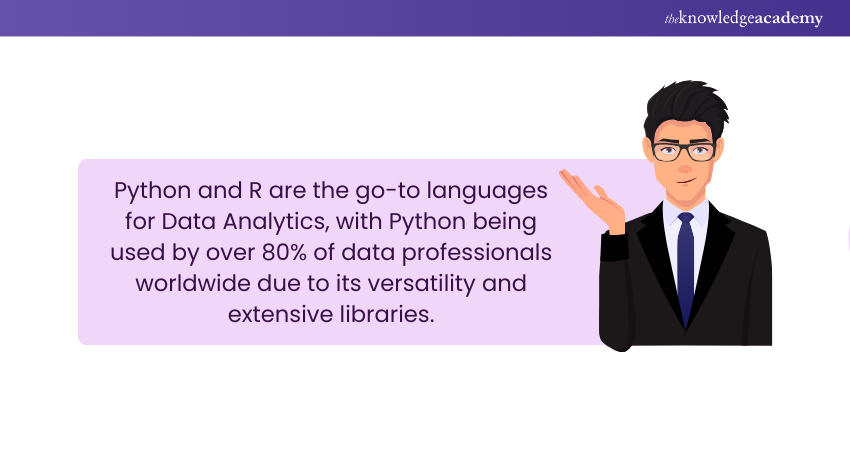
Sample Answer: The most commonly used programming languages in Data Analytics are Python and R. Python is popular for its extensive libraries like pandas and sci-kit-learn, while R is favoured for statistical analysis. SQL is also widely used for database querying.
5) How do you clean and preprocess data before conducting analysis?
The interviewer wants to know your process for preparing data analysis.
Sample Answer: “Data cleaning and preprocessing involve steps such as handling missing values, removing duplicates, correcting data entry errors, and transforming data types. I also normalise or standardise data if required and ensure that categorical variables are appropriately encoded.”
6) Can you explain clustering and its common applications?
The interviewer wants to know whether you are aware of clustering techniques and their use cases.
Sample Answer: Clustering is an unsupervised learning technique used to group similar data points together based on their features. Common applications include customer segmentation, market research, and image recognition.
7) What are the key differences between supervised and unsupervised learning?
The interviewer wants to know your understanding of different types of Machine Learning.
Sample Answer: Supervised learning involves training a model on labelled data where the correct output is known, such as in regression and classification tasks. Unsupervised learning works with unlabeled data to find hidden patterns or intrinsic structures, such as clustering.
8) How would you approach and perform an A/B testing experiment?
The interviewer wants to know your understanding of experimental design and statistical testing.
Sample Answer: "In an A/B test, I would define a clear hypothesis, randomly split the population into two groups (A and B), and expose them to different variations. I would then analyse the results using statistical tests to determine if there is a significant difference in outcomes."
9) What are the main differences between data mining and data profiling?
The interviewer is interested in knowing if you know different Data Analysis techniques.
Sample Answer: Data mining involves discovering patterns and relationships in large datasets, often using Machine Learning algorithms. Data profiling, on the other hand, focuses on understanding the structure, content, and quality of data, typically as part of the data cleansing process.
10) Define Data Wrangling in the context of Data Analytics.
The interviewer wants to know your experience with data preparation processes.
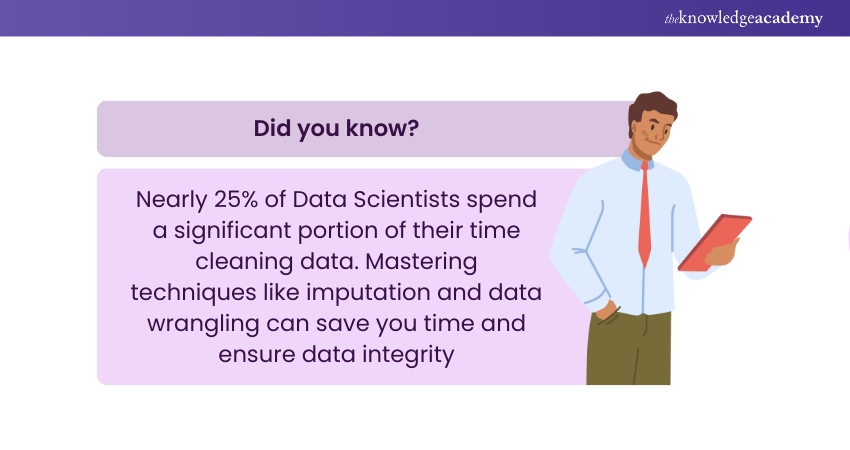
Sample Answer: Data Wrangling, also known as data munging, is the process of cleaning, transforming, and organising raw data into a format suitable for analysis. It involves handling missing data, correcting inaccuracies, and reformatting data to ensure consistency.
11) What are some common challenges Data Analysts face during analysis?
The interviewer wants to know your ability to anticipate and solve common issues in Data Analysis.
Sample Answer: Common challenges include dealing with incomplete or inconsistent data, selecting the right model or analysis method, managing large datasets, and communicating complex results to non-technical stakeholders.
12) Which tools and technologies have you used for analysis and presentation?
The interviewer wants to know your proficiency with relevant tools.
Sample Answer: "I have used tools like Excel, SQL, Python (with libraries such as pandas and matplotlib), R, and data visualisation tools like Tableau and Power BI. These tools help in various stages of analysis, from data cleaning to visualisation."
13) What does Exploratory Data Analysis (EDA) involve?
The interviewer wants to know your understanding of EDA and its importance.
Sample Answer: EDA involves summarising the main characteristics of a dataset, often using visual methods. It helps in identifying patterns, spotting anomalies, testing hypotheses, and checking assumptions before applying more complex modelling techniques.
14) What are the most effective techniques for data cleansing?
The interviewer wants to know your approach to ensuring data quality.
Sample Answer: Effective techniques include removing duplicates, filling or imputing missing values, correcting data entry errors, ensuring consistent formatting, and validating data against known standards or rules.
15) What are the different sampling methods used in Data Analysis?
The interviewer wants to know your knowledge of sampling techniques.
Sample Answer: Common sampling methods include random sampling, stratified sampling, systematic sampling, and cluster sampling. Each method has its use case, depending on the data and the analysis goals.
16) Explain the concepts of univariate, bivariate, and multivariate analysis.
The interviewer wants to know your understanding of different types of Data Analysis.
Sample Answer: Univariate analysis examines one variable at a time, focusing on its distribution and patterns. Bivariate analysis explores the relationship between two variables, often using scatter plots or correlation coefficients. Multivariate analysis involves analysing more than two variables simultaneously to understand complex relationships.
17) What are your strengths and weaknesses as a Data Analyst?
The interviewer wants to know your self-awareness and areas for improvement.
Sample Answer: "My strengths include strong analytical skills, attention to detail, and proficiency in using various Data Analysis tools. A weakness I’m working on is improving my speed in data cleaning, as it can sometimes be time-consuming."
18) What ethical considerations should be kept in mind during Data Analysis?
The interviewer wants to know your awareness of ethical issues in Data Analysis.
Sample Answer: Ethical considerations include ensuring data privacy, avoiding biased analysis, maintaining data accuracy, and being transparent about the limitations of your analysis. It’s crucial to avoid misrepresenting data and ensure that analysis results are used responsibly.
19) Which data visualisation tools are you proficient in?
The interviewer wants to know your experience with visualisation tools.
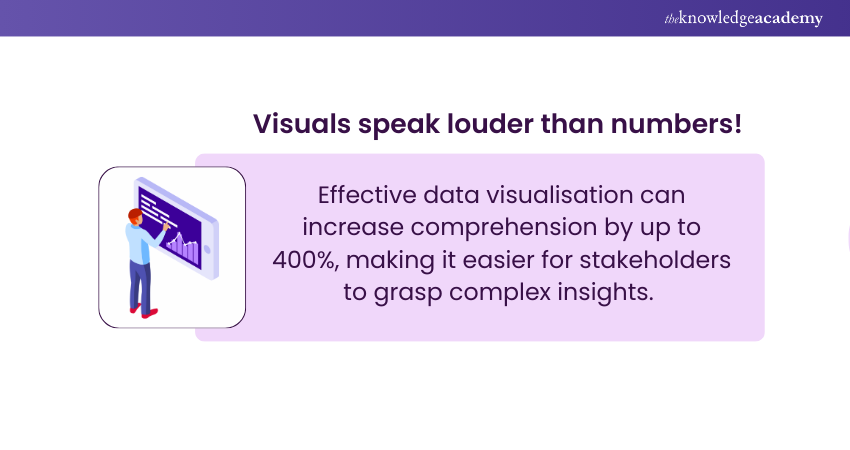
Sample Answer: "I am proficient in Tableau, Power BI, and Python’s matplotlib and seaborn libraries. These tools help create effective visualisations that communicate insights clearly and effectively."
Learn how to implement advanced AI techniques with our Certified Artificial Intelligence For Data Analysts Training – Join today!
Data Analytics Interview Questions on Statistics
Explore these key questions and answers by focusing on statistics in Data Analytics.
20) How do you handle missing values in a dataset?
The interviewer wants to know your strategy for dealing with incomplete data.
Sample Answer: "Handling missing values depends on the context and the extent of missingness. Common methods include imputation using mean, median, or mode or using Machine Learning algorithms that can handle missing data. If the missing data is not significant, I may choose to exclude those records."
21) What is the Normal Distribution, and why is it important?
The interviewer is interested in knowing your understanding of statistical concepts.
Sample Answer: The Normal Distribution is a bell-shaped distribution where most data points cluster around the mean. It is important because many statistical methods assume normality, and it helps in making inferences about a population from a sample.
22) Can you explain what Time Series analysis is?
The interviewer wants to know whether you are aware of time-based Data Analysis.
Sample Answer: Time Series analysis involves analysing data points collected or recorded at specific time intervals. It’s used to identify trends, seasonal patterns, and cyclical behaviour in data over time and is commonly applied in forecasting.
23) How do you differentiate between overfitting and underfitting in models?
The interviewer wants to know your understanding of model performance issues.
Sample Answer: Overfitting occurs when a model is too complex and captures noise along with the underlying pattern, leading to poor generalisation of new data. Underfitting happens when a model is too simple to capture the underlying pattern, resulting in poor performance on both training and test data. Balancing model complexity is key to avoiding both issues.
24) What strategies do you use to handle outliers in a dataset?
The interviewer wants to know your techniques for dealing with anomalies in data.
Sample Answer: "Strategies for handling outliers include removing them if they are errors, transforming data, using robust statistical methods, or applying algorithms that are not sensitive to outliers. I always analyse the impact of outliers before deciding on the approach."
25) What are Type I and Type II errors in statistics?
The interviewer wants to know your knowledge of error types in hypothesis testing.
Sample Answer: Type I error occurs when we incorrectly reject a true null hypothesis (false positive). Type II error happens when we fail to reject a false null hypothesis (false negative). Balancing these errors involves considering the consequences of each type of error and adjusting significance levels accordingly.
26) How do you identify outliers in a dataset? Explain the concept of outlier detection.
The interviewer wants to know your methods for detecting anomalies in data.
Sample Answer: Outliers can be identified using statistical methods like z-scores, which measure how many standard deviations a data point is from the mean, or using visual methods like box plots and scatter plots. More advanced techniques include using robust statistical methods or Machine Learning algorithms designed for anomaly detection.
Excel Data Analytics Interview Questions
Find the crucial Excel-related questions and their answers for Data Analytics interviews:
27) How do the Excel functions COUNT, COUNTA, COUNTBLANK, and COUNTIF differ?
The interviewer wants to know your understanding of basic Excel functions.
Sample Answer: COUNT counts numeric values, COUNTA counts all non-empty cells, COUNTBLANK counts empty cells, and COUNTIF counts cells that meet a specified criterion. Each function serves a different purpose in Data Analysis.
Learn statistical functions to analyse data with our Data Analysis Training Using MS Excel – Join today!
28) How can you create a drop-down list in MS Excel?
The interviewer wants to know your knowledge of Data Validation in Excel.
Sample Answer: To create a drop-down list in Excel, go to the Data tab, select Data Validation, choose "List" from the Allow box, and enter the list of values you want in the Source box. This feature helps standardise data entry and reduce errors.
29) Is it possible to define a dynamic range for a pivot table in Excel? If so, how?
The interviewer wants to know your ability to manage dynamic data ranges in Excel.
Sample Answer: Yes, it is possible. You can define a dynamic range using a named range with the OFFSET function. This named range will automatically adjust as new data is added. You then use this named range as the source for your pivot table.
30) Which Excel function can determine the day of the week for a given date?
The interviewer wants to know your knowledge of date-related functions in Excel.
Sample Answer: The WEEKDAY function determines the day of the week for a given date. It returns a number corresponding to the day, which can be customised to display the name of the day using additional functions or formatting.
31) How does the AND() function work in Excel?
The interviewer wants to know whether you are aware of logical functions in Excel.
Sample Answer: The AND() function returns TRUE if all the conditions specified are true; otherwise, it returns FALSE. It is often used in conjunction with other functions like IF() to perform conditional calculations.
32) What is the VLOOKUP function in Excel, and how is it used?
The interviewer wants to know your knowledge of lookup functions in Excel.
Sample Answer: The VLOOKUP function searches for a value in the first column of a table and returns a value in the same row from a specified column. It is used to find and retrieve data from large tables based on a matching value.
33) How can you retrieve the current date and time in Excel?
The interviewer wants to know your knowledge of Excel functions for date and time.
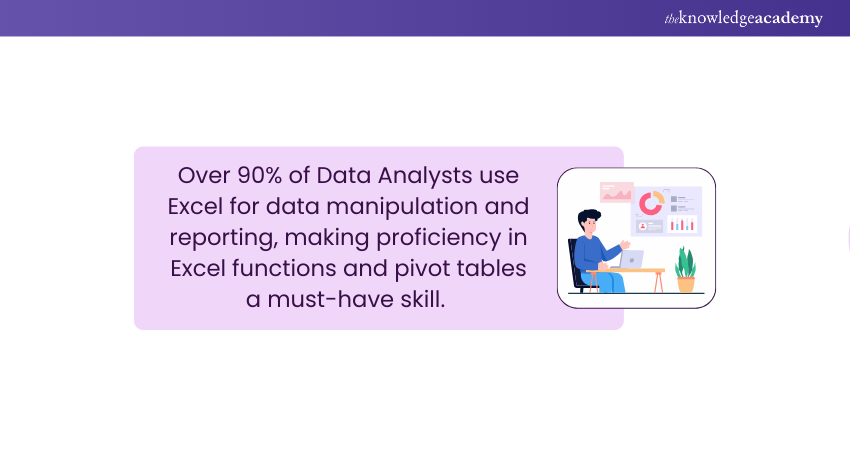
Sample Answer: You can retrieve the current date using the TODAY() function and the current time using the NOW() function. Both functions update automatically to reflect the current date and time.
Learn techniques for complex data analysis with our Big Data Analytics Training– Join today!
SQL Interview Questions for Data Analytics
Get familiar with these important SQL questions and answers for Data Analytics roles:
34) How do you filter data in SQL?
The interviewer wants to know your skills in querying databases.
Sample Answer: To filter data in SQL, you use the WHERE clause to specify the conditions that rows must meet to be included in the result set. For example, SELECT * FROM table_name WHERE column_name = 'value'; filters the rows where the column matches the specified value.
35) What is the difference between the WHERE and HAVING clauses in SQL?
The interviewer wants to know your understanding of SQL query clauses.
Sample Answer: The WHERE clause filters rows before grouping occurs, whereas the HAVING clause filters groups after aggregation. For example, you use WHERE to filter individual records and HAVING to filter groups or aggregated results.
36) How are the SQL operators UNION, INTERSECT, and EXCEPT used?
The interviewer wants to know your knowledge of set operations in SQL.
Sample Answer: UNION combines the result sets of two or more SELECT statements and removes duplicates; INTERSECT returns only the rows that are present in both result sets, and EXCEPT returns rows from the first result set that are not present in the second.
37) What is the purpose of a subquery in SQL?
The interviewer wants to know your understanding of nested queries.
Sample Answer: A subquery is a query nested inside another query. It is used to perform operations that need a result from one query to be used in another. For example, it can be used to filter data based on results from a secondary query.
Learn the basics of SQL with our Introduction to SQL Course – Join today!
38) Write a SQL query to find the record with the fourth-highest value in the product_price table.
The interviewer wants to know your ability to write complex SQL queries.
Sample Answer: 'SELECT * FROM (SELECT DISTINCT product_price FROM product_table ORDER BY product_price DESC LIMIT 4) AS subquery ORDER BY product_price ASC LIMIT 1;' This query finds the fourth-highest price by first selecting the top four distinct prices and then getting the lowest of these.
39) How do you create a stored procedure in SQL?
The interviewer wants to know your experience with SQL programming.
Sample Answer: To create a stored procedure, you use the 'CREATE PROCEDURE' statement followed by the procedure name and its logic. For example:
|
CREATE PROCEDURE procedure_name AS BEGIN -- SQL statements END; |
40) Write a SQL stored procedure to calculate the total number of even numbers between two user-defined values.
The interviewer wants to know your skills in SQL procedural programming.
Sample Answer:
|
CREATE PROCEDURE CountEvenNumbers @start INT, @end INT AS BEGIN SELECT COUNT(*) FROM (SELECT number FROM numbers_table WHERE number BETWEEN @start AND @end AND number % 2 = 0) AS EvenNumbers; END; |
This procedure calculates the number of even numbers between two given values.
Tableau Data Analytics Interview Questions
Review these Tableau-specific questions and answers to excel in Data Analytics interviews:
41) What is the difference between joining and blending data in Tableau?
The interviewer wants to know your understanding of data integration methods in Tableau.
Sample Answer: Joining combines data from multiple tables into a single table based on a common field, whereas blending allows you to combine data from different data sources without merging them physically. Blending is used when data sources have different granularities.
42) What does LOD (Level of Detail) mean in Tableau, and why is it important?
The interviewer wants to know your knowledge of advanced Tableau features.
Sample Answer: LOD expressions in Tableau allow for calculations at different levels of granularity within the same view. They are important because they enable you to perform complex aggregations and calculations that are not possible with basic aggregations alone.
43) How does the feature selection process work, and why is it important in Data Analysis?
The interviewer wants to know your understanding of feature selection and its impact.
Sample Answer: Feature selection involves choosing the most relevant variables for your analysis or model. It is important because it can improve model performance by reducing overfitting, improving accuracy, and decreasing computational complexity.
44) What types of data connections does Tableau offer?
The interviewer wants to know if you are familiar with Tableau's data connection options.
Sample Answer: Tableau offers several data connections, including live connections to databases, connections to cloud services, and the ability to connect to flat files such as Excel or CSV. You can also use web data connectors to access data from web-based sources.
45) What different types of joins are available in Tableau?
The interviewer wants to know your knowledge of data merging methods in Tableau.
Sample Answer: Tableau supports various types of joins, including inner join, left join, right join, and outer join. Each type determines how records from different tables are combined based on the join conditions.
46) What is a Gantt Chart in Tableau, and when would you use it?
The interviewer wants to know if you are familiar with Tableau’s chart types.
Sample Answer: A Gantt Chart in Tableau is used to show the timeline of tasks or activities. It is particularly useful for project management to visualise schedules, track progress, and manage resources.
Learn to create interactive data visualisations with our Tableau Desktop Course – Join today!
47) How do Heatmaps differ from Treemaps in Tableau?
The interviewer wants to know your ability to differentiate between visualisation types.
Sample Answer: Heatmaps use colour gradients to represent data values across a matrix, making them useful for visualising intensity or density. Treemaps use nested rectangles to show hierarchical data, with the size and colour of rectangles representing different dimensions or metrics.
Technical Data Analytics Interview Questions
Here are the technical questions and answers you need for a Data Analytics interview:
48) What steps do you take to clean and preprocess data before analysis?
The interviewer wants to know your approach to preparing data for accurate analysis.
Sample Answer: The steps include:
a) Data Cleaning: Remove duplicates, handle missing values (e.g., imputation or deletion), and correct inconsistencies.
b) Data Transformation: Convert data types if needed, normalise or standardise values, and create necessary features.
c) Data Integration: Combine data from different sources, ensuring consistency.
d) Data Reduction: Select relevant features and reduce dimensionality if required to improve model performance.
49) What is hypothesis testing, and how is it applied in Data Analysis?
The interviewer wants to know if you are familiar with statistical testing methods.
Sample Answer: Hypothesis testing is a method to determine if there is enough statistical evidence to reject a null hypothesis. It involves:
a) Formulating Hypotheses: Define the null hypothesis (H0) and alternative hypothesis (H1).
b) Choosing a Test: Select a statistical test based on the data type and research question (e.g., t-test, chi-square test).
c) Calculating p-Value: Determine the p-value to assess the probability of observing the data if H0 is true.
d) Making a Decision: Compare the p-value with a significance level (alpha) to accept or reject H0.
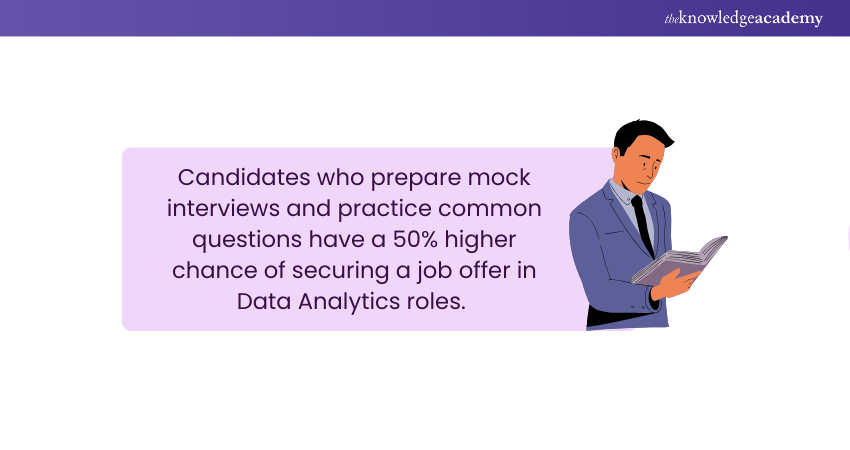
50) How do you interpret p-values and confidence intervals?
The interviewer wants to know your ability to interpret statistical results.
Sample Answer:
a) P-Value: Represents the probability of obtaining the observed results, assuming the null hypothesis is true. A p-value less than 0.05 usually indicates strong evidence against the null hypothesis.
b) Confidence Interval (CI): A range of values that is likely to contain the population parameter with a certain level of confidence (e.g., 95%). If the interval does not include the null hypothesis value, it suggests significant results.
51) Explain the Central Limit Theorem and its significance in Data Analysis.
The interviewer wants to know if you are familiar with foundational statistical concepts.
Sample Answer: The Central Limit Theorem (CLT) states that the distribution of the sample mean approaches a normal distribution as the sample size becomes large, regardless of the original data distribution. This theorem is significant because it allows for the use of normal distribution approximations in hypothesis testing and confidence intervals, even with non-normal data distributions.
52) Discuss the difference between correlation and causation.
The interviewer wants to know your understanding of relationships between variables.
Sample Answer:
a) Correlation: Measures the strength and direction of a linear relationship between two variables. It does not imply causation.
b) Causation: Indicates that one variable directly influences another. Establishing causation typically requires controlled experiments or additional evidence beyond mere correlation.
Machine Learning Data Analytics Interview Questions
Prepare these key questions and answers related to Machine Learning in Data Analytics.
53) What are the primary evaluation metrics for regression and classification models?
The interviewer is interested in knowing whether you know about model performance assessment.
Sample Answer:
a) Regression Metrics: Mean Absolute Error (MAE), Mean Squared Error (MSE), Root Mean Squared Error (RMSE), and R-squared.
b) Classification Metrics: Accuracy, Precision, Recall, F1-score, and Area Under the Receiver Operating Characteristic (ROC-AUC) curve.
54) How do decision trees work in Machine Learning?
The interviewer wants to know your understanding of decision tree algorithms.
Sample Answer: Decision trees split the dataset into subsets based on feature values, creating a tree-like model of decisions. Each internal node represents a feature test, each branch represents an outcome of the test, and each leaf node represents a class label or regression value. The tree is built by recursively partitioning the data to maximise information gain or minimise impurity.
55) What is the difference between bagging and boosting algorithms?
The interviewer wants to know if you are familiar with ensemble learning techniques.
Sample Answer:
a) Bagging (Bootstrap Aggregating): Builds multiple models independently using different random subsets of the data and averages their predictions. It reduces variance and helps prevent overfitting.
b) Boosting: Sequentially builds models where each new model attempts to correct errors made by previous models. It reduces bias and can improve model performance by focusing on difficult-to-predict cases.
56) How does Hadoop play a role in processing Big Data?
The interviewer wants to know your understanding of Big Data technologies.
Sample Answer: Hadoop is an open-source framework that enables distributed processing of large datasets across clusters of computers. It uses the Hadoop Distributed File System (HDFS) to store data across multiple machines and the MapReduce programming model to process data in parallel. This allows for scalable and efficient handling of vast amounts of data.
Learn about supervised learning concepts with our Machine Learning Course – Join today!
Behavioural Data Analytics Interview Questions
Discover these behavioural questions and answers to showcase your Data Analytics experience:
57) Can you describe a challenging project you worked on and how you overcame obstacles?
The interviewer wants to know your problem-solving and Project Management skills.
Sample Answer: In a project analysing customer churn, I faced challenges with incomplete data and tight deadlines. I overcame these obstacles by implementing data imputation techniques, prioritising tasks effectively, and using automated tools to speed up the analysis process. This approach allowed us to deliver actionable insights on time.
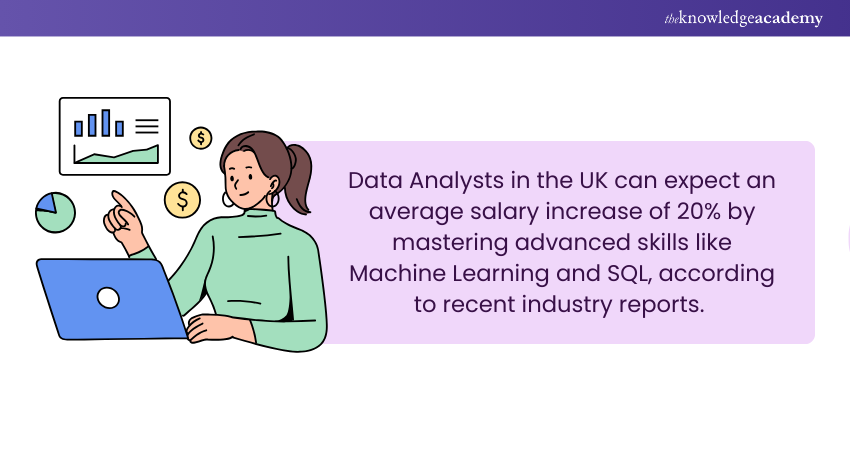
58) How do you manage time and prioritise tasks in a Data Analytics project?
The interviewer wants to know your time management and organisational skills.
Sample Answer: “I use Project Management tools to track tasks and deadlines, prioritising based on project impact and urgency. I break down complex tasks into smaller steps, set realistic milestones, and regularly review progress to adjust priorities as needed. Effective communication with stakeholders also helps ensure that critical tasks are completed on time. “
59) Describe a situation where you had to explain complex Data Analysis to non-technical stakeholders.
The interviewer wants to know your ability to communicate technical information.
Sample Answer: “I presented complex sales Data Analysis to senior management by focusing on key insights and using simple visualisations. I avoided technical jargon, explained findings in layman's terms, and related the analysis to business objectives. This approach ensured that stakeholders understood the implications and made informed decisions.”
60) How do you handle conflicting priorities and tight deadlines in a project?
The interviewer wants to know how to manage stress and conflicting demands.
Sample Answer: “I handle conflicting priorities by assessing the urgency and impact of each task. I communicate clearly with team members and stakeholders to set realistic expectations and negotiate deadlines if necessary. By staying organised and focused on key objectives, I manage tight deadlines effectively and ensure quality deliverables.”
Conclusion
Mastering Data Analytics Interview Questions is essential for anyone looking to excel in the field of Data Analytics. Whether you're focusing on statistics, SQL, Excel, or Machine Learning, being prepared with thoughtful and clear answers will help you stand out. Practice these questions, refine your responses, and you'll be well-equipped to tackle any interview with confidence.
Understand Data Wrangling with our Data Science Analytics Course – Join today!
Frequently Asked Questions
Upcoming Data, Analytics & AI Resources Batches & Dates
Date
 Hadoop Big Data Certification
Hadoop Big Data Certification
Thu 23rd Jan 2025
Thu 20th Mar 2025
Thu 22nd May 2025
Thu 17th Jul 2025
Thu 18th Sep 2025
Thu 20th Nov 2025







 Top Rated Course
Top Rated Course


 If you wish to make any changes to your course, please
If you wish to make any changes to your course, please


